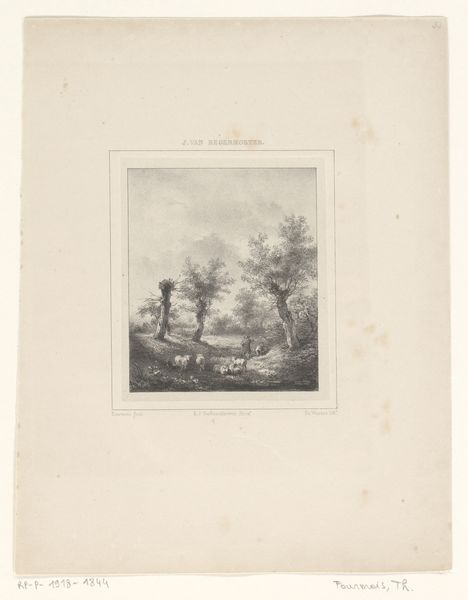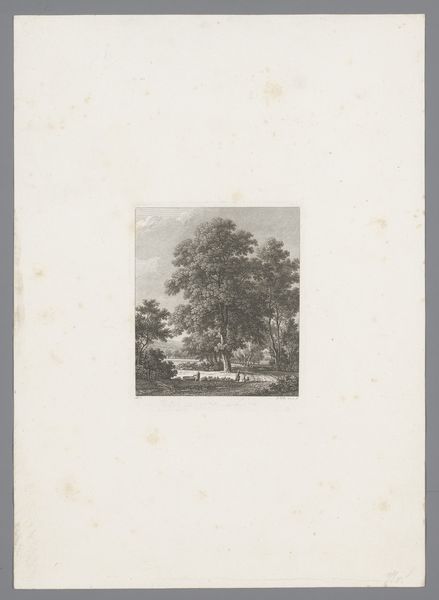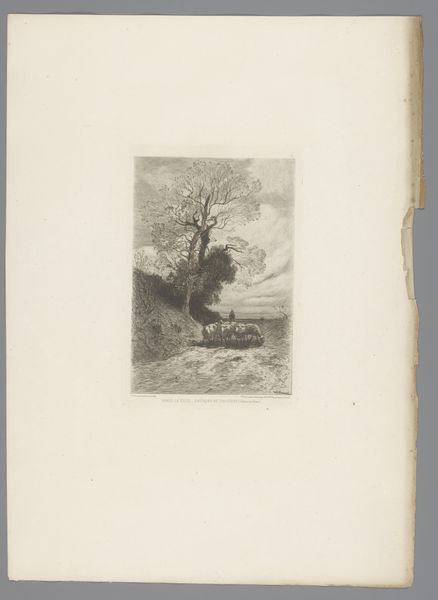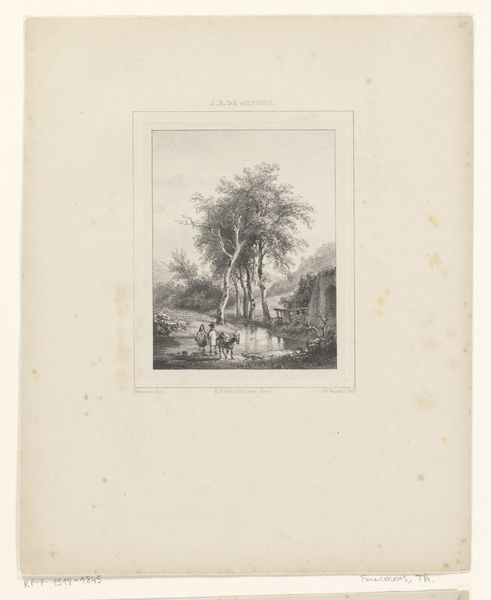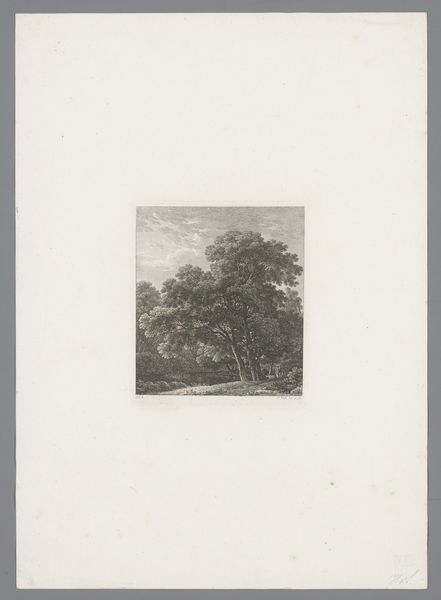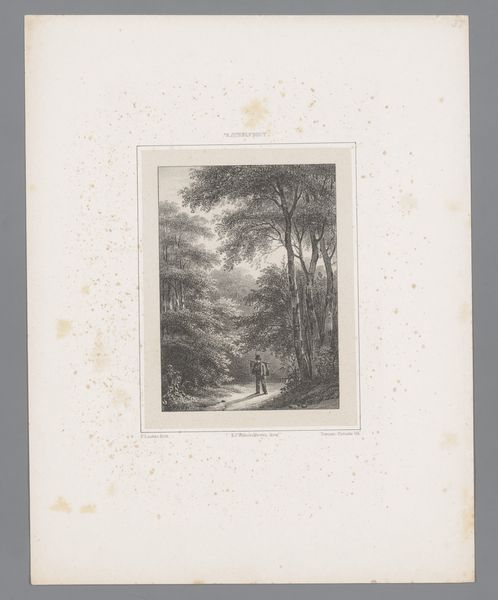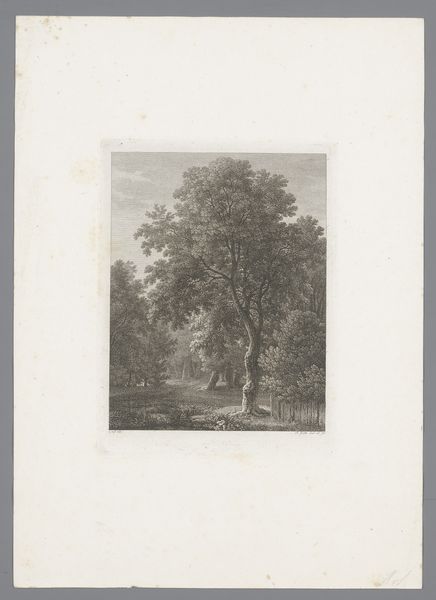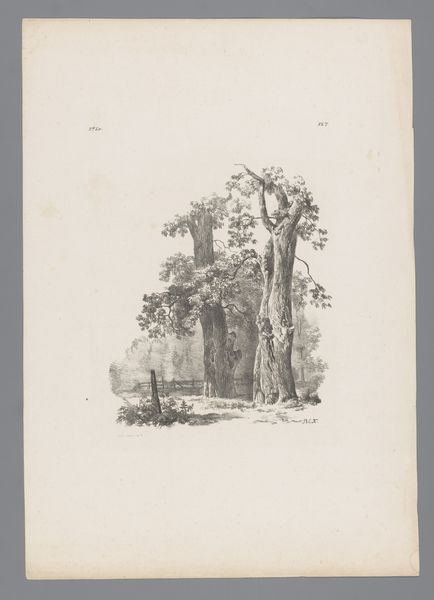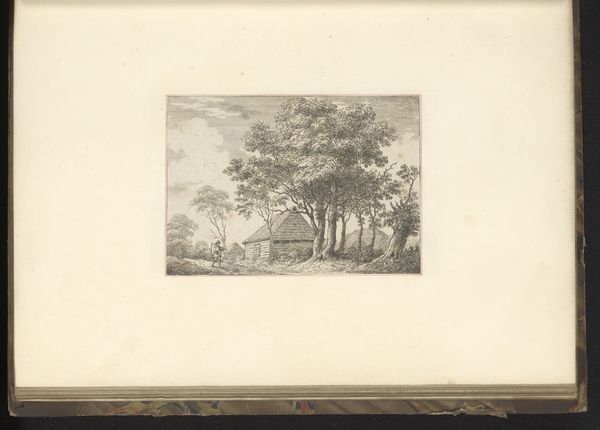
print, etching, pencil, engraving
# print
#
etching
#
landscape
#
figuration
#
romanticism
#
pencil
#
line
#
engraving
#
realism
#
monochrome
Dimensions: height 260 mm, width 202 mm
Copyright: Rijks Museum: Open Domain
Curator: Editor: Okay, so next we have "Landscape with a Drinking Cow," a print from 1829 by Paulus Lauters. It's an etching and engraving, mainly in monochrome. It's so detailed. What do you see in this piece? Curator: This piece intrigues me because it highlights the labour involved in creating the romantic idyll. Consider the tools and techniques – the etching and engraving. How do these processes influence our understanding of 'landscape' at the time? Are we viewing the labourer’s view? Or the landowner's fantasy? Editor: That’s interesting, I hadn’t thought of it that way. It felt quite removed from any real social commentary. Curator: But isn't the choice of representing rural life itself a commentary? Consider the market for such images; Who bought them, and what desires did they fulfill? What message does idealising agrarian life send, in an increasingly industrial world? Editor: So, it's not just about pretty scenery. It’s also about the cultural consumption of labour and rural life during a time of industrial transition? Curator: Exactly! The artist's skill, and the printers’ skill, are transformed into a commodity, reinforcing existing social structures while seeming simply to reflect them. It speaks volumes about the romantic era's relationship with production. How are you feeling about the romantic ideal now? Editor: I see it! The material conditions behind such images shape their message in a profound way, creating new markets, while disguising labor. That gives me a whole new perspective on Romanticism! Thanks! Curator: Indeed, every artwork reflects production as much as expression. Food for thought, definitely!
Comments
No comments
Be the first to comment and join the conversation on the ultimate creative platform.

